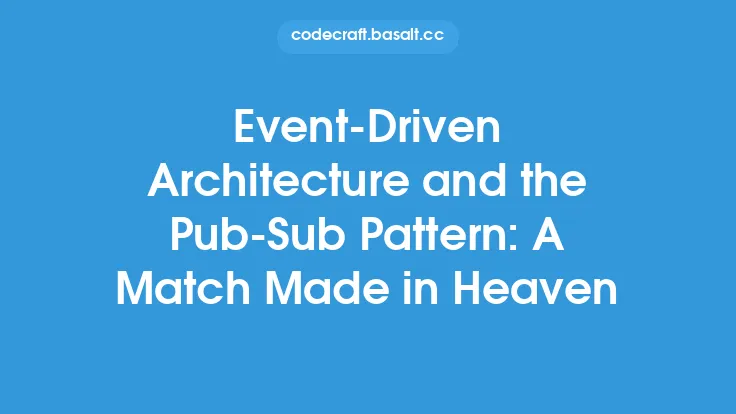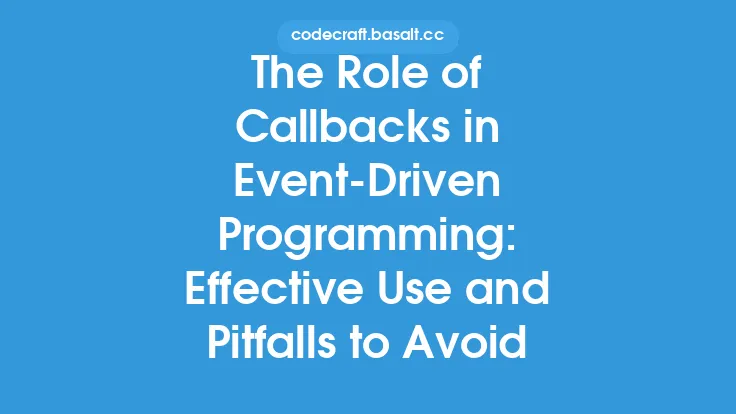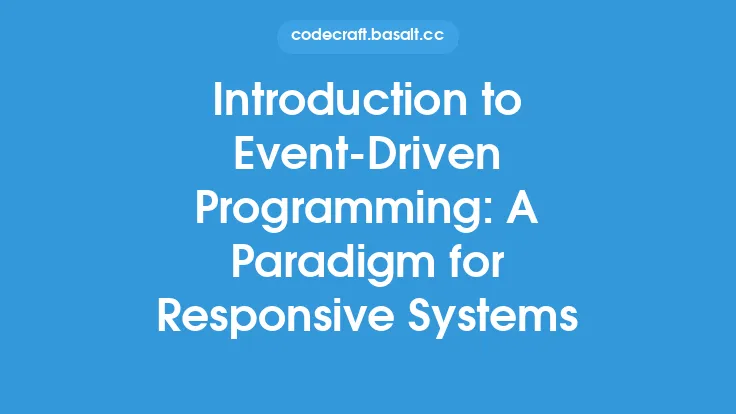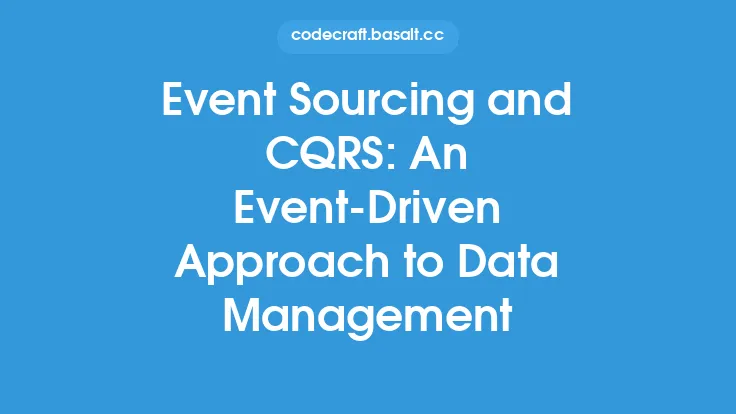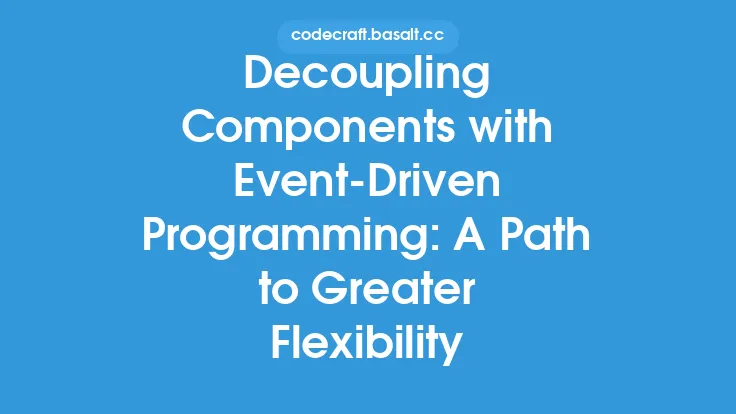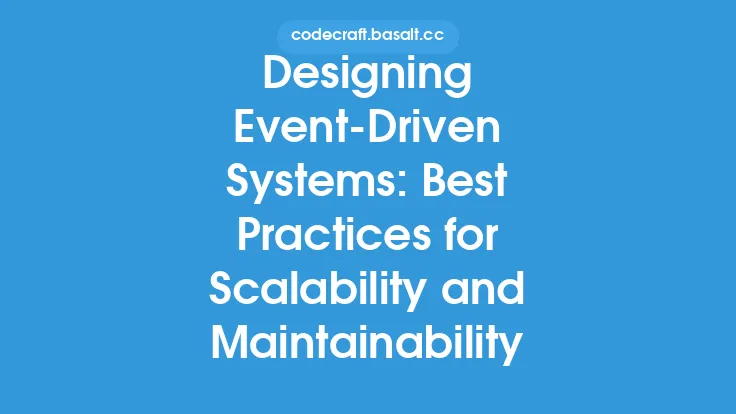Event-driven programming is a paradigm that revolves around handling and responding to events or user interactions. It's a highly extensible and scalable approach, allowing for the creation of complex systems that can adapt to changing requirements. At the heart of this paradigm lies the observer pattern, a design pattern that enables objects to notify other objects of changes to their state. The combination of event-driven programming and the observer pattern is a match made for extensibility, as it allows for loose coupling between objects and enables the creation of highly modular and reusable code.
Introduction to the Observer Pattern
The observer pattern is a behavioral design pattern that defines a one-to-many dependency between objects, allowing objects to notify other objects of changes to their state. It consists of two main components: the subject and the observer. The subject is the object being observed, and it maintains a list of observers that are interested in its state. When the subject's state changes, it notifies all its observers, which then update their own state accordingly. This pattern is useful for reducing coupling between objects and enabling the creation of highly modular and reusable code.
Event-Driven Programming and the Observer Pattern
In event-driven programming, the observer pattern plays a crucial role in handling and responding to events. When an event occurs, the subject (the object that triggered the event) notifies its observers, which then respond to the event. This decouples the subject from the observers, allowing for a loose coupling between objects. The observers can then react to the event without having a direct reference to the subject, making it easier to add or remove observers as needed. This approach enables the creation of highly extensible and scalable systems, as new observers can be added without modifying the existing code.
Benefits of Combining Event-Driven Programming and the Observer Pattern
The combination of event-driven programming and the observer pattern offers several benefits, including loose coupling, extensibility, and scalability. Loose coupling allows objects to interact with each other without having a direct reference, making it easier to modify or replace individual components without affecting the rest of the system. Extensibility enables the addition of new features or components without modifying the existing code, while scalability allows the system to handle increased traffic or load without compromising performance. Additionally, this approach enables the creation of highly modular and reusable code, making it easier to maintain and evolve the system over time.
Implementing the Observer Pattern in Event-Driven Programming
Implementing the observer pattern in event-driven programming involves several steps. First, define the subject and observer interfaces, which specify the methods that the subject and observers must implement. Next, create a concrete subject class that maintains a list of observers and notifies them when its state changes. Then, create concrete observer classes that implement the observer interface and respond to events triggered by the subject. Finally, register the observers with the subject, allowing them to receive notifications when the subject's state changes. This implementation enables the creation of a highly extensible and scalable system, as new observers can be added or removed as needed.
Example Use Case: A Simple Chat Application
A simple chat application is a classic example of event-driven programming and the observer pattern in action. In this example, the chat server is the subject, and the clients are the observers. When a client sends a message, the chat server notifies all connected clients, which then update their chat logs accordingly. This decouples the chat server from the clients, allowing for a loose coupling between objects. New clients can be added or removed without modifying the existing code, making it easier to scale the system as needed. Additionally, this approach enables the creation of highly modular and reusable code, making it easier to maintain and evolve the system over time.
Best Practices for Implementing the Observer Pattern
When implementing the observer pattern in event-driven programming, several best practices should be followed. First, use interfaces to define the subject and observer contracts, making it easier to add or remove observers as needed. Second, use a weak reference to store observers, preventing memory leaks and ensuring that observers can be garbage collected when no longer needed. Third, use a thread-safe approach to notify observers, preventing concurrent modification exceptions and ensuring that observers are notified in a consistent order. Finally, document the observer pattern and its implementation, making it easier for developers to understand and maintain the code.
Common Pitfalls and Challenges
When combining event-driven programming and the observer pattern, several common pitfalls and challenges should be avoided. First, avoid tight coupling between objects, as this can make it difficult to modify or replace individual components without affecting the rest of the system. Second, avoid using a strong reference to store observers, as this can prevent memory leaks and make it difficult to garbage collect observers when no longer needed. Third, avoid using a non-thread-safe approach to notify observers, as this can cause concurrent modification exceptions and make it difficult to ensure that observers are notified in a consistent order. Finally, avoid neglecting to document the observer pattern and its implementation, as this can make it difficult for developers to understand and maintain the code.
Conclusion
In conclusion, the combination of event-driven programming and the observer pattern is a match made for extensibility. This approach enables the creation of highly modular and reusable code, making it easier to maintain and evolve the system over time. By following best practices and avoiding common pitfalls and challenges, developers can create highly extensible and scalable systems that can adapt to changing requirements. Whether building a simple chat application or a complex enterprise system, the observer pattern is an essential tool for any developer working with event-driven programming.
